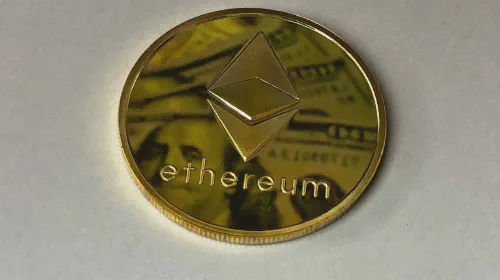Ethereum vs. Ethereum Classic - What's the Difference?
Salomon Kisters
Sep 19, 2022This post may contain affiliate links. If you use these links to buy something we may earn a commission. Thanks!
Did you know that Ethereum Classic was the original form of Ethereum? Yet, because of many disagreements in the Ethereum community, the two blockchains eventually split, and an Ethereum fork ended up creating Ethereum Classic or ETC and Ethereum or ETH.
Although the two unique forms of Ethereum were created using the same code, they are presently very different in terms of developer ecosystem and community support. ETH is at the center of Decentralized Finance (DeFi) as well as smart contracts, while ETC has fewer use cases and, unfortunately, has been targeted by 51% attacks in the crypto space.
Why the Need for the Split?
Ethereum’s price topped $4,800 earlier last year, following the popularity of Decentralized Finance and the continuous expansion of the NFT sector. With permissionless lending and borrowing, DeFi has the potential to completely replace traditional financial practices. Not to mention, NFTs have drawn countless celebrities - including athletes, entertainers, and public figures - to the online world of crypto.
The majority of cryptocurrency projects today are powered by Ethereum. Any build or transaction on Ethereum costs ETH for gas expenses, which contributes money to the chain and furthers adoption.
Wall Street took notice when Ethereum started being accepted by crypto users on such a massive scale-often outperforming Bitcoin.
However, change is a constant, and Ethereum is no exception. The old Ethereum blockchain had a major problem with Decentralized Autonomous Organizations (DAO) and related hacks that cost the crypto users a lot of money in lost ETH. Only after the Ethereum Fork event did any of these more favorable developments for the leading altcoin occur. The fork caused the Ethereum blockchain to split into two separate routes and tokens that we now know as ETC and ETH.
The term “Classic” was added to the original Ethereum blockchain, which was replaced by the newly forked Ethereum through mutual agreement. The Ethereum Classic network is still in use today, despite not having nearly as much support or interest as the Ethereum blockchain since certain members of the community refused to give it up.
How Did the Split Occur?
We got the ETH and ETC split after Vitalik Buterin, the creator of Ethereum, voted in favor of the Ethereum Fork. While the new Ethereum carried on with the original name, the initial blockchain adopted the name “Ethereum Classic.” The Ethereum fork was required to prevent the ecosystem from collapsing completely, which may have resulted in a massive dip in the Ethereum price.
Ethereum Classic trades use ETC as their symbol, while Ethereum trades use the ETH moniker. The currency that drives the Ethereum Virtual Machine and supercomputer network is “Ether,” which remains constant in both native cryptocurrencies. The split took place in July 2016, just after Bitcoin’s halving, and played a major role in catapulting cryptocurrencies to the attention of the public in 2017.
Key Differences: Ethereum Classic and Ethereum
The code for Ethereum and Ethereum Classic is identical. This code just divides further into two different pathways. However, how these two routes have evolved through time has drastically changed the speculative value of digital assets. Although there aren’t as many differences between the two as we might think, due primarily to their inherent similarity, these handful of differences are still quite too significant to ignore.
Concepts and Creation
Following his obsession with Bitcoin and blockchain, the then 19-year-old engineer Vitalik Buterin was the person responsible for creating Ethereum. He planned to use this innovative technology to build his own cryptocurrency system that would help smart contracts and digital agreements to function and perform transactions in a completely new manner.
He was aware of the limits of the original cryptocurrency asset and tried to address them in his new project.
Buterin intended for simple agreements, like real estate deals, to be written in the form of smart contracts, as well as more complex codes that facilitate decentralized exchanges and DeFi applications.
Although Ethereum Classic can perform any function that Ethereum can, the development community has almost virtually abandoned it. The Decentralized Finance Pulse chart, for instance, which displays a total locked up value in ETH, is an accurate visual illustration of this tendency.
Ethereum Classic has had no DEXs, DAPPs, NFTs, or anything else constructed for it, and as a result, the cryptocurrency has been subject to the bulk of attacks from miscreants.
Transactions and Speed
Both systems can easily perform around 12–15 transactions per second, and the amount of ETH gas fees paid determines how long it takes for a transaction to obtain Ether. Meaning that the speed of the transaction increases with cost.
Along with Ethereum transactions, ERC-20 tokens developed on the platform also require you to spend ETH, which keeps the asset in high demand as more tokens are created.
The ETH 2.0 update for the Ethereum blockchain, something the users have been anticipating since 2020, will enable Ethereum and its users to perform more transactions per second. The update will allow Ethereum developers to work on improving its transaction speed and scalability.
Total Ethereum Supply
The current real-time Ethereum price is USD 1,711.85, while the total volume that has been traded in 24 hours amounts to USD 17,603,572,710. About 122 million Ethereum coins are circulating in the digital world. The ETH users who own a significant amount of ETH coins all intend to decrease the supply of Ether circulating the crypto markets to possibly bump up the price of ETH tokens over time.
When comparing Bitcoin with Ethereum, one major difference that appears is that, unlike Bitcoin, the total supply of Ethereum is not limited. The most attractive part about owning ETH tokens is that Ether is required for fueling crypto transactions.
More Ether is being burned than minted, meaning the supply is decreasing, which will eventually lead to a higher value for Ethereum as both user adoption and transactions increase. These shifts make Ethereum a deflationary crypto token that is attractive to investors.
Use Cases and Target Market
The same goals, applications, and intended users were kept in mind when creating both of these cryptocurrencies. Since Ethereum Classic contends with Ethereum for the same market share and user base, it is frequently taken as an “attack” on Ethereum.
But there is, in fact, no rivalry. ETC is well down the list of cryptocurrencies by a huge gap and has no Decentralized Finance apps or NFTs supporting it. Ethereum is leading the alternative currency revolution, only behind Bitcoin.
Trends frequently shift, but with ETC and ETH, the newer version is certain to remain dominant while the original continues to vanish into history.
The Superior Version
Readers who have been paying attention now probably have a good idea of which of the two Ethereum versions is the superior one. Given the drawbacks ETC has, it is clearly inferior. One of the main reasons for this is that it directly rivals Ethereum, and so its users see it as an attack on the leading cryptocurrency. It also confuses new users and hinders the adoption of Ethereum currency.
This is probably why it has been under attack by such a large number of hackers on a few occasions when a group of miners who controlled over 50% of the network’s hash rate and used its influence on the crypto world stole money from other users and engaged in double-spending.
Ethereum Classic has been attacked in this way several times, making it a very unstable technology. On the other hand, Ethereum is a much safer bet as a cryptocurrency because it has far more to offer.
The Clear Winner
There is a reason why so many people love using Ethereum; it has almost all the advantages a cryptocurrency has to offer. The majority of the cryptocurrency market is based on Ethereum’s smart contracts, and since most other tokens depend on ETH to utilize them, the demand for ETH is almost always high.
Not to mention, the entire Decentralized Finance and NFT marketplace, which have been sweeping through cryptocurrency in recent months, is centered around Ethereum.
In terms of total market capitalization, Ethereum is the most valuable altcoin today, only surpassed by Bitcoin.
It is debatable if Ethereum Classic even merits its current position of 20 on the list of cryptocurrencies by market capitalization. The token is more of a money pit for inexperienced cryptocurrency investors who mistakenly believe it to be Ethereum. ETC is a riskier cryptocurrency than other currencies in the developing asset class, thanks mainly to the constant threat of hacks or real assaults.
People looking to enter the crypto world through Ethereum should avoid investing in Ethereum Classic as it presents a riskier investment. Even though Ethereum Classic came first, the new Ethereum (the one most people know and use today) is the only profitable option because it has massive adoption along with strong retail and institutional investment.
Stay informed with the latest insights in Crypto, Blockchain, and Cyber-Security! Subscribe to our newsletter now to receive exclusive updates, expert analyses, and current developments directly to your inbox. Don't miss the opportunity to expand your knowledge and stay up-to-date.
Love what you're reading? Subscribe for top stories in Crypto, Blockchain, and Cyber-Security. Stay informed with exclusive updates.
Please note that the Content may have been generated with the Help of AI. The editorial content of OriginStamp AG does not constitute a recommendation for investment or purchase advice. In principle, an investment can also lead to a total loss. Therefore, please seek advice before making an investment decision.

7 Reasons Why Ethereum Is Different From Bitcoin
In this article, we’ll look at the differences between Ethereum and Bitcoin and see where Ethereum improved upon its blockchain technology by learning from its predecessor.

Are Nfts Bad for the Environment?
Energy consumption is the main issue that people have with cryptocurrencies and NFTs. But how bad are NFTs for the environment after all?

Counterfeit Protection With Blockchain [Interview] - OriginStamp.com
Learn how OriginStamp uses blockchain technology to protect against counterfeits and ensure data integrity in this insightful interview.
Protect your documents
Your gateway to unforgeable data. Imprint the authenticity of your information with our blockchain timestamp